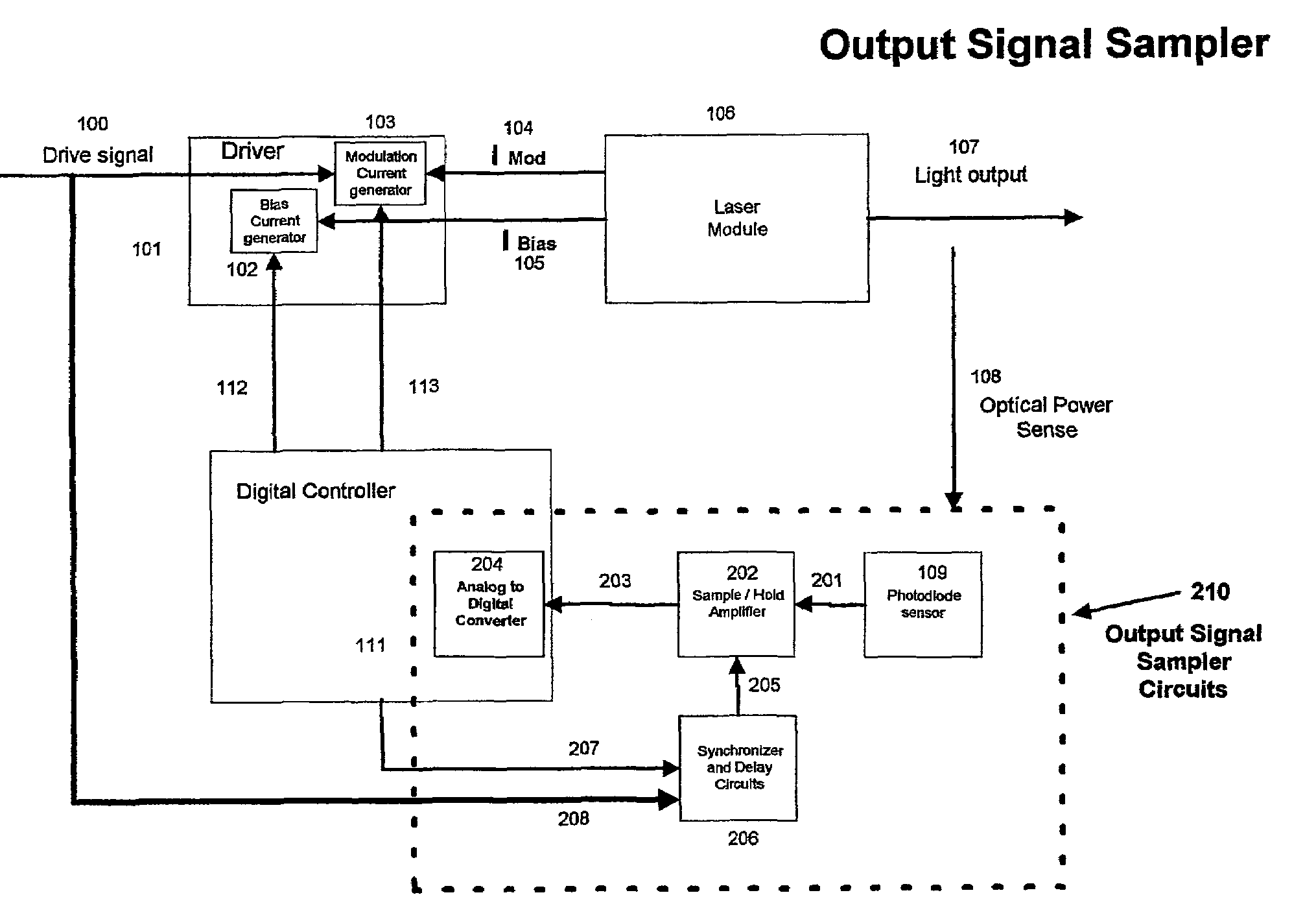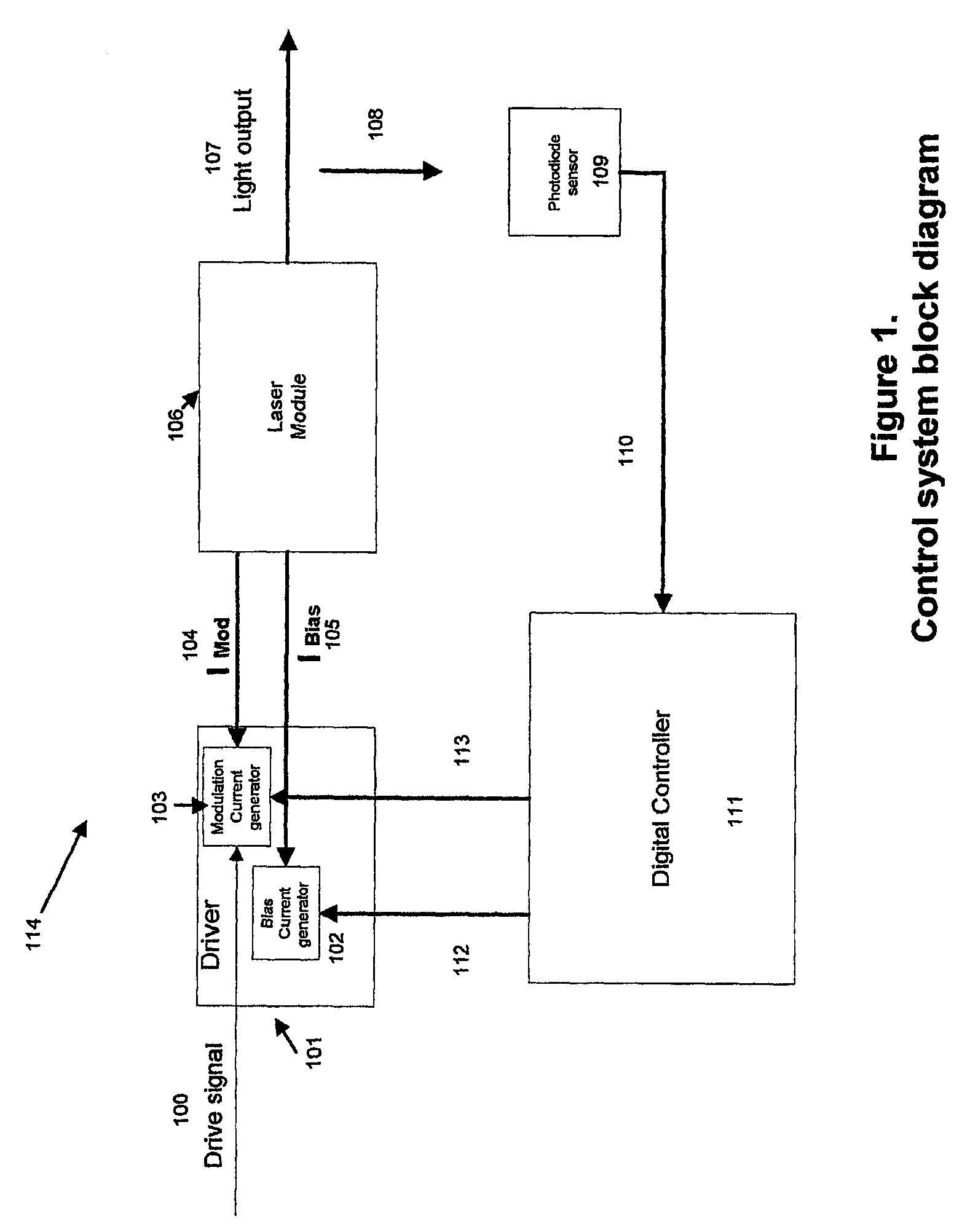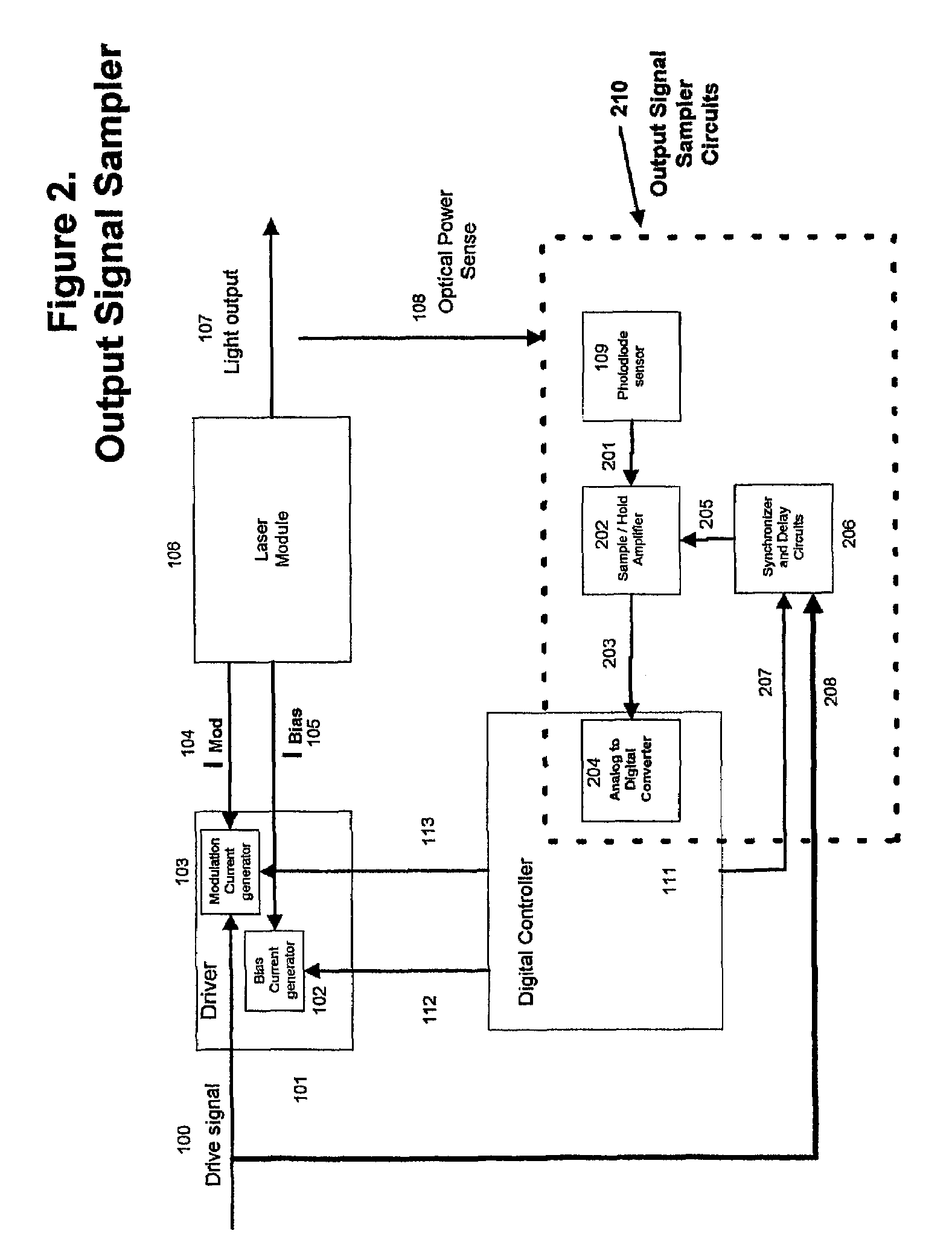Apparatus and method for measurement for dynamic laser signals
a laser signal and apparatus technology, applied in the direction of electrical apparatus, laser details, semiconductor lasers, etc., can solve the problems of extinction ratio and an increased bit error rate, signal strength to be reduced, and difficulty in obtaining feedback information
- Summary
- Abstract
- Description
- Claims
- Application Information
AI Technical Summary
Benefits of technology
Problems solved by technology
Method used
Image
Examples
Embodiment Construction
[0044]The above-mentioned difficulties and problems of the prior art are overcome by the present invention.
Apparatus
[0045]Referring to FIG. 1, a block diagram is shown for a Laser Control System (114). The system consists of a drive Signal Input (100) applied to a Laser Module Driver (101), which contains a Bias Current Generator (102) and a Modulation Current Generator (103). A Bias Control Signal (112) and a Modulation Control Signal (113) control the current generators. The Driver (101) produces Modulation Current (104) and Bias Current (105) that are applied to the Laser Module (106). The Laser Module (106) in turn produces Light Output (107). The magnitude of the Light Output (107) bears a relationship to the magnitude of the Modulation Current (104) and the Bias Current (105). A portion of the Light Output (107) from the laser is sensed. This portion constitutes the Optical Power Sense (108), which is coupled to a Photodiode Sensor (109). The Photodiode Sensor Output (110) is ...
PUM
 Login to View More
Login to View More Abstract
Description
Claims
Application Information
 Login to View More
Login to View More - R&D
- Intellectual Property
- Life Sciences
- Materials
- Tech Scout
- Unparalleled Data Quality
- Higher Quality Content
- 60% Fewer Hallucinations
Browse by: Latest US Patents, China's latest patents, Technical Efficacy Thesaurus, Application Domain, Technology Topic, Popular Technical Reports.
© 2025 PatSnap. All rights reserved.Legal|Privacy policy|Modern Slavery Act Transparency Statement|Sitemap|About US| Contact US: help@patsnap.com



